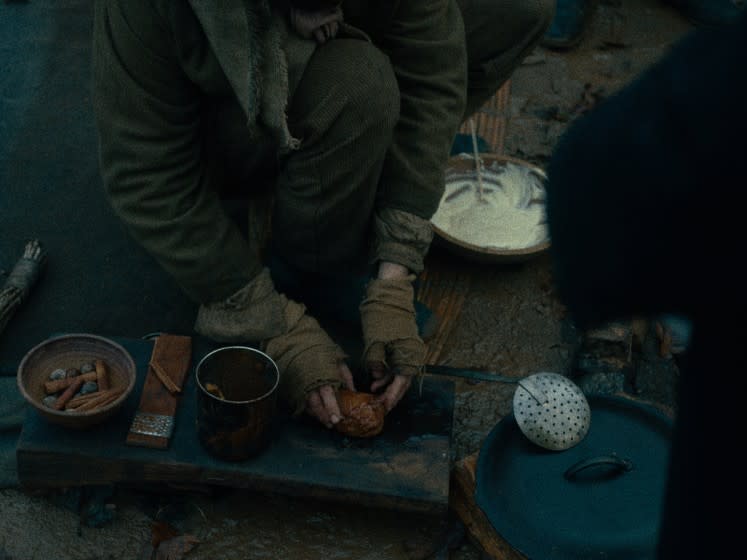Scene-stealing oily cakes in Kelly Reichardt's 'First Cow'

A fetching, big-eyed bovine named Evie is the surprise star of “First Cow,” Kelly Reichardt’s latest film, but she gets a run for her money from confections called oily cakes in this beautiful, textured tale of life in the 1820s Oregon wilderness.
Using milk stolen from a wealthy man’s dairy cow, a soft-spoken wanderer named Otis “Cookie” Figowitz (John Magaro) and his equally marginalized roommate, King-Lu (Orion Lee), start earning money by making and selling deep-fried dough to pastry-starved frontiersmen.
Cookie uses a delicate, artful spray of twigs bound together with string to whisk together his batter. And by mid-movie he is preparing oily cakes à la minute for a line of loyal regulars, dropping spoonfuls of batter into sizzling lard and drizzling each dark orb with wild honey before dusting it with freshly grated cinnamon.
“You should probably not see ‘First Cow’ on an empty stomach,” cautioned Los Angeles Times film critic Justin Chang in his glowing review.
The movie is a loose adaptation of co-screenwriter and frequent Reichardt collaborator Jon Raymond's 2004 novel “The Half-Life.”
Poke around the internet for “oily cakes” and you’ll find that what Cookie is whipping up are Dutch oly koeks. I posited they were like funnel cakes to the chef Nancy Silverton but after seeing the movie, she argued they are “less of a funnel cake and more of a cruller.”
Reichardt and Raymond, who are legendary for historical accuracy in their screen collaborations, were sure that the basic yeast doughnut recipe used called for baking soda, not baking powder (which wasn’t invented until 1843).
While John Magaro, the actor who plays Cookie, has a pastry chef’s graceful gestures and observant gaze down pat, it was actually assistant prop master Sean Fong who prepared the hundreds of oily cakes needed during the production.
“[The actors] did have to eat them on set so we wanted them to taste good,” says Reichardt, who described the flavor as “like that fried dough you get on Mulberry Street at the carnival every year.”
Reichardt remembers that just after the shoot wrapped she made the long drive back from her Portland home to the film's rural location to retrieve something on set.
“When I got there," she said, "I came upon a whole bunch of extras still in their costumes and the crew, just hanging around a fire, drinking wrap beers and eating oily cakes. And I thought to myself, ‘All right, the oily cakes are a big hit.'”

